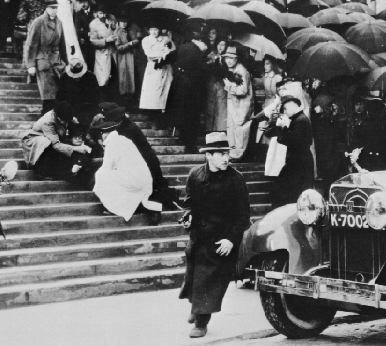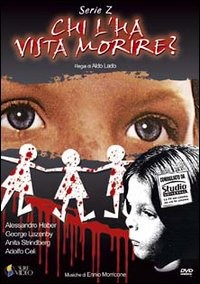 My partner Paula is a big fan of Japanese anime and has introduced me to a strand of cinema I didn't previously know much about. The work of Hayao Miyazaki has impressed me in particular, with 'Spirited Away' and 'Howl's Moving Castle' now installed on the 100 personal faves list. Until I get round to blogging about either of them, I asked Paula to write about her personal favourite Miyazaki film. My thanks to her for the following article.
My partner Paula is a big fan of Japanese anime and has introduced me to a strand of cinema I didn't previously know much about. The work of Hayao Miyazaki has impressed me in particular, with 'Spirited Away' and 'Howl's Moving Castle' now installed on the 100 personal faves list. Until I get round to blogging about either of them, I asked Paula to write about her personal favourite Miyazaki film. My thanks to her for the following article.'Nausicaa of the Valley of the Wind' was Hayao Miyazaki's second film but his first collaboration with Toshio Suzuki, who became his producer. The success of this film led to the foundation of Studio Ghibli. Miyazaki went on to make Japanese box office successes 'Porco Rosso', 'Kiki's Delivery Service' and the Oscar-winning 'Spirited Away'. Other Studio Ghibli directors include Asio Takahata, Hiroyuki Morita and Hayao's son Goro Miyazaki.
'Nausicaa' seems to have been a template for future Studio Ghibli productions: already in evidence are Miyazaki's love of aircraft ('Porco Rosso', 'Laputa: Castle in the Sky', 'Howl's Moving Castle'), environmental concerns and the natural world ('Princess Mononoke', Asio Takahata's 'Pom Poko'), changing times/conflict/the threat of war ('Porco Rosso', Takahata's 'Grave of the Fireflies', 'Howl's Moving Castle'), young heroines forced to make a choice or at a crossroads in life ('Kiki's Delivery Service', Yoshifumi Kondo's 'Whisper of the Heart', 'Spirited Away', Morita's 'The Cat Returns'). Miyazaki also seems to have strong feminist sympathies and you can see this very clearly in nearly all of his films: 'Spirited Away' is the story of a young girl who needs to be strong and become more mature for the sake of her parents who have have been captured; in 'Howl's Moving Castle'; a young women who initially has very little confidence in herself and her appearance learns that she has a lot more strength of personality when she is cursed with a spell that ages her; the heroine of 'Kiki's Delivery Service' is a young witch who must spend a year away from home and discover her powers.
'Nausicaa' is set in the future after the collapse of the industrial world. The eponymous heroine is a young woman who lives in the Valley Of The Wind; the film details her special ability to communicate with insects and her harmony with the natural world, as well as her forays into the toxic jungle which is gradually covering the planet. Other kingdoms are on the verge of making the same mistakes that led to the seven days of fire (the collapse of the industrial world) because they fear the spread of the toxic jungle. Nausicaa and her people, however, have learned to live with the threat of it by using forces such as fire in moderation. Nausicaa and her people's way of life is threatened when the warlike Tolmekians attempt to force them to join in a campaign to destroy the toxic jungle.
The first thing that captured me was the opening credits: it tells the story of the seven days of fire in the form of a tapestry, a purely visual explanation of what happened before and during the seven days as well as the immediate aftermath.
What I love about the film is the fact that the industrial world has collapsed and Nausicaa's village is at one with nature: they are agricultural, working the land, using the power of the wind and fire but only in moderation ("too much fire and nothing will live"). I also love the character of Nausicaa herself, her ability to understand insects and the fact that she discovers why the toxic jungle is poisoned. She is a strong character who even the older villagers look up to. She doesn't fear the insects, she respects them. There is a lovely scene where some of the villagers want to kill an insect that has become injured and fallen into the Valley; out of fear, it is summoning other insects to rescue it. Whereas the villagers advocate killing it to prevent an onslaught of other insects, Nausicaa calmly uses her insect charm and manages to lead it away. I also love the three old men who serve as hostages after the Tolmekians invade - although they only have a couple of scenes, their comic banter and irrepressible good-humour is needed in a film with such serious themes.
The Giant Warriors - the hulking war machines that rampage during the seven days of fire - while terrifying, are also very poignant and make me think of a line from 'The Matrix': "we marvelled at our own magnificence as we gave birth to AI". In 'Nausicaa', humankind gives birth to the Giant Warriors which as a result wreak destruction upon the planet.
The film is relevant to today's society. The Tolmekians are representative of interventionist governments who mistakenly believe that heavy-handed militarism is a solution, when it fact in makes the situation worse.
Despite heavy themes and concerns, the film is beautiful: Miyazaki conjures visual poetry in Nausicaa's relationship with the natural world. The tapestry in the opening credits is a work of art, not just depicting the seven days of fire, but foretelling a legend that, by the end of the film, is fulfilled - a symbol of hope from the outset. Even the insects, who can be destructive and aggressive when needed, are shown as wise and very protective of each other. The music, too, is very beautiful, Joe Hisaishi's score perfectly complementing the images and the story.
The animation - like all Studio Ghibli - is striking and very detailed; although it doesn't have the bright colours of 'Porco Rosso', it suits the themes and concerns of the film.
In short, 'Nausicaa' has a serious concept but is also heart-warming, especially the ending - not a happily-ever-after ending, but a hopeful one.
by Paula Harrison

















































